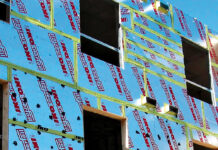By Richard Lyall
RESCON
The residential construction industry is facing strong headwinds these days, when it comes to building new homes.
Developers and builders are up against supply chain issues, challenges finding skilled trades to do the work, inflation and rising interest rates, which are making it difficult for new buyers, to name a few.
Not surprisingly, the torrid pace of new home construction could be coming to an end. Mike Moffatt, an assistant professor at Western University’s Ivey School of Business, recently warned that although the home construction market will remain strong in the long term, there will be weakness in the next six to 18 months as financing costs of projects go up and consumer demand wanes.
However, it is critical that we reform our approvals system and tear down the entrenched barriers to building so that we can continue to boost the supply of housing. We must tackle inefficiencies in the system and pull out all the stops to boost supply, because demand for housing is not going away.
Increasing deterioration
Serious prevailing and systemic issues not only remain but are causing ongoing and increasing deterioration in the ability of the residential sector to deliver housing supply. Indeed, while there are a number of factors contributing to the current climate, many of the most significant are to be found within municipal processes, policies and what constitutes an unacceptable level of mismanagement.
A report released recently by Canada Mortgage and Housing Corp. found that current construction projections are still 3.5 million units short of what is needed in order to address the supply and demand imbalance in the market. In Ontario, the government has pledged to build 1.5 million units over the next 10 years. But, with more than 400,000 immigrants coming to Canada each year, many of whom will settle in the GTHA and rest of Ontario, will that figure be enough?
Sadly, there are many hurdles in the way which prevent housing from being built. Toronto city council recently threw up another one with the decision to hike development charges for residential buildings by 46 per cent. This cost will be borne by developers and ultimately the buyers.
Shocking increases
By 2024, the charges for detached and semi-detached houses will rise to $137,040 from $93,978, while charges for a condo with two or more bedrooms will rise to $113,271 from $77,679. For an apartment with two or more bedrooms, the charge will rise to $80,218 from $55,012. These are shocking increases, and the figures don’t include other rising government charges and costs, such as parkland fees and excessive climate change measures introduced without an analysis.
Government fees and charges already impact the cost of building a home by as much as 24 per cent. It is mind-numbing that council would tack on more costs at a time when housing is in such need. Our population is expected to continue growing, which will only magnify the situation.
We must fix the long-standing problems that prevent new housing from being built and reduce risk. The provincial government has taken positive steps, but there is still much that can be done. We must leave no stone unturned to balance housing supply and demand and ensure people are housed properly.
We must fix the unpredictable and antiquated development approvals process. RESCON has proposed the One Ontario solution to create a digitized and streamlined development approvals standard.
Importantly, we must also end exclusionary zoning practices, especially in GTHA municipalities, and establish province-wide standards to spur “missing middle” housing, instead of catering to the NIMBY set.
In spite of the obstacles, we must keep the ball rolling on housing.
Richard Lyall is president of the Residential Construction Council of Ontario (RESCON). He has represented the building industry in Ontario since 1991. media@rescon.com.












